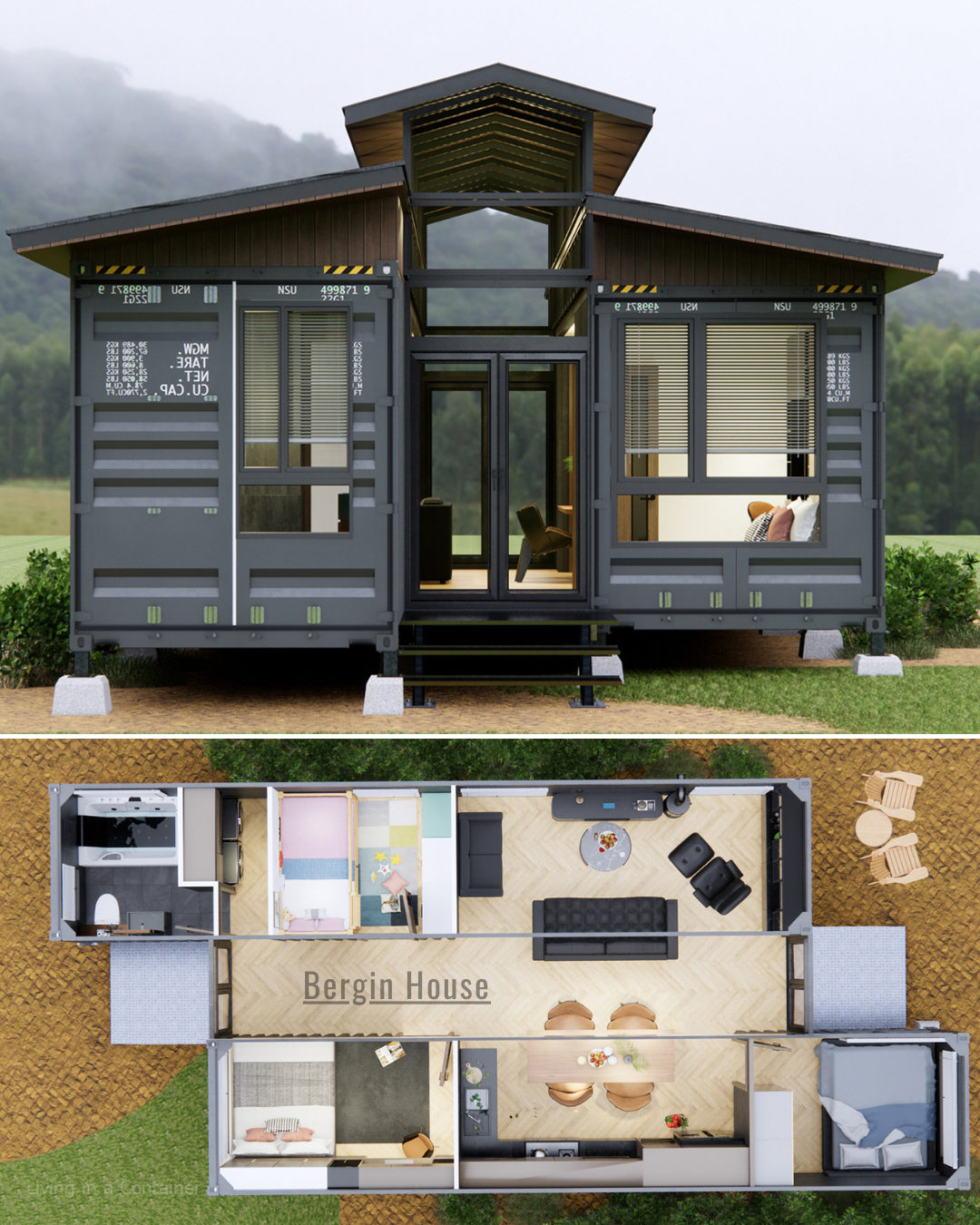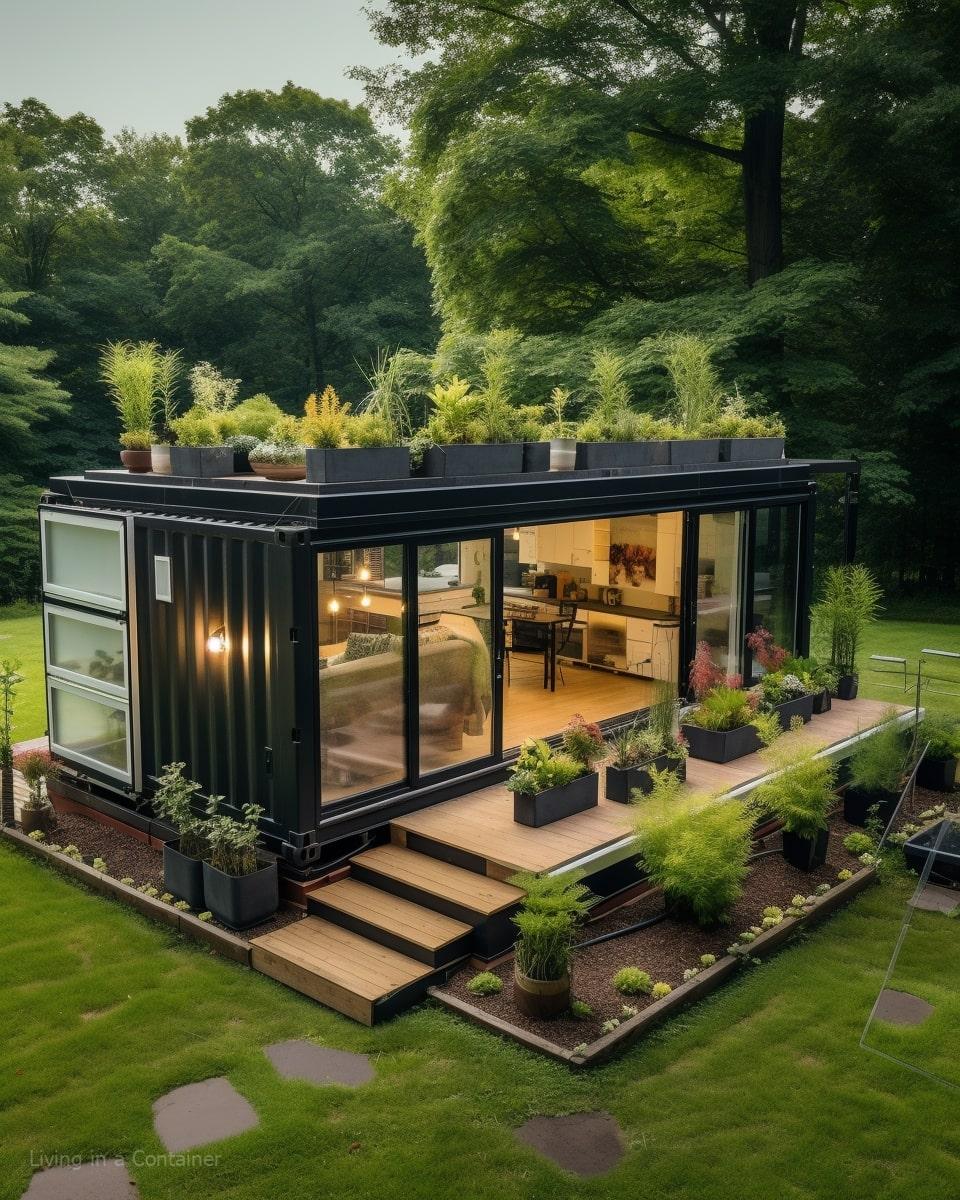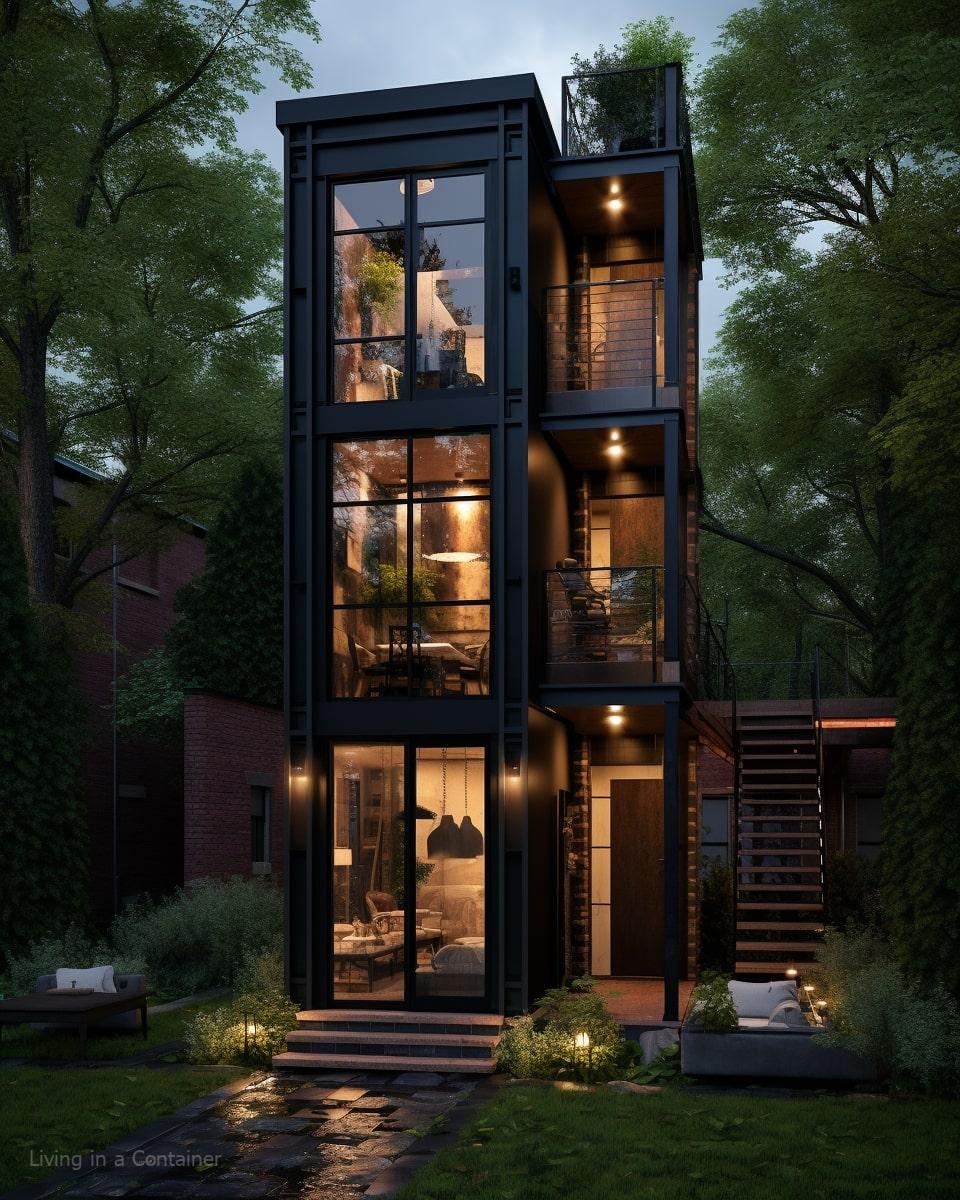When it comes to designing and building a unique and eco-friendly home, shipping container homes have become an increasingly popular choice.
They are not only cost-effective but also provide a robust and readily available core structure.
Turning a forty foot shipping container into a comfortable and stylish living space requires careful planning and implementation from the design phase to the final finishing touch.
This discussion walks you through the three vital stages of creating a successful shipping container home, namely designing the home, procuring and preparing containers, and the actual building and finishing process.
Along the journey, you will learn how to skillfully place rooms, windows, doors, plumbing, and electric systems for maximum functionality, produce an attractive interior, and meet local building codes while preserving the inherent strength and character of shipping containers.

Designing the Home
If the innovative idea of building with shipping containers has caught your imagination, then you’re not alone! With their cost-effectiveness, durability, and versatility, shipping containers are increasingly sought after as the raw material for constructing unique, eco-friendly homes. With some solid planning and creative vision, a shipping container can become an incredible space. But remember, successful container home design requires a thorough understanding of a few critical considerations. Here’s a low-down.
- Local Building Codes and Zoning Laws: This is the first and most crucial step. Before initiating any construction process, the local council rules and zoning laws must be fully understood to ensure compliance. Each city, state, or country may have a different set of rules governing shipping container homes.
- Structural Integrity: While shipping containers are designed to handle quite a load, altering them can affect their structural stability. Removing side panels or stacking containers may require additional reinforcement. It’s always best to consult a structural engineer when making any significant modifications.
- Insulation: Containers are steel boxes that can easily become chilly or hot based on the outside temperature. Therefore, insulation is of paramount importance in creating a comfortable living space. There are several insulation options available, and the choice relies largely on the local climate and personal preference.
- Container Condition: All containers are not created equal. A new one-trip container possesses a considerably higher quality than a used one. Used containers may have severe wear and tear, and they might have carried hazardous materials. Research the history of a used container thoroughly before purchasing.
- Preventing Rust and Corrosion: Being metallic, containers are prone to rust and corrosion, especially in humid or marine environments. Implement preventive measures such as rustproof paint and regular maintenance to increase the life of your container home.
- Living Space Considerations: Remember, containers are relatively narrow. Designing the space efficiently to accommodate kitchens, bathrooms, living areas, and storage space requires smart planning. Engaging a professional architect or utilizing container home design software can be beneficial.
- Placement of HVAC Systems: Heating, Ventilation, and Air Conditioning systems are a necessity for maintaining the home’s comfort level. Where would these systems be placed, so they neither disrupt the aesthetics nor the usable space? This requires careful planning.
- Sustainability and Eco-Friendliness: Finally, one of the significant selling points of a shipping container home is its potential for sustainability. Incorporating green building techniques, such as using recycled or sustainable materials, installing solar panels, or creating a green roof, can go a long way in reducing the environmental footprint.
Designing a shipping container home is both exciting and challenging but recognizing these critical considerations at the initial stage can make the journey much smoother. So, go ahead and incorporate these tips while conceptualizing your dream container home, and you’ll surely navigate the challenges with much ease.

Procurement and Preparation of Containers
The Art of Selecting and Prepping Shipping Containers for Home Construction
Let’s talk about the next steps required on this exciting journey of erecting a shipping container home! This part of the process can really make or break your project, so let’s dive headfirst into the nitty-gritty details.
Start with understanding the container type and size that suits your needs best. Shipping containers come in various sizes, typically ranging from 10 feet to 53 feet in length.
Standard options are 20-foot or 40-foot long containers, as these are the most commonly used in commercial shipping. Bear in mind, the greater the size, the more demanding the transportation and maneuvering will become.
Next, examine the material of your selected container. As most of them are made of steel, ensure it’s corten steel to get the best protection against the elements. Always go for shipping containers made from quality material, even if it costs you a little more upfront.
Once you’ve picked the perfect container, it’s time for prep!
First things first, a good cleaning session is essential. Shipping containers have a past life, meaning they might carry residue, dirt, or even pests.
Power washing the interior and exterior should do the trick. Don’t forget to wear protective gear while cleaning to protect yourself from any potentially harmful materials.
Now, if you weren’t lucky enough to obtain a container with pre-cut openings, you have to make your own. Mark precise outlines for windows and doors, and for any other utility lines you plan to include. Use a plasma cutter or hiring a professional for a clean and accurate cut.
Once the holes are cut, it’s time to treat your container for rust. Rust can be a serious issue, so it’s better to deal with it before it becomes a problem.
An angle grinder will remove any surface rust or paint, getting you ready for the rust-proofing treatment. Apply a rust-converting primer followed by a coat of rust-inhibitive paint to give your shipping container the protection it needs against the elements.
Safety, efficiency, and style – these are the words to live by in shipping container home construction.
Use the effort invested in the selection and preparation stages to ensure a smooth transition to the actual construction phase. Prepare your container with diligence, keep learning, and your shipping container home will surely turn out stunning, structurally sound, and uniquely your own.
Now that we’ve primed your shipping container and you’re well-equipped with knowledge, why wait another minute?
It’s time for the real fun to begin: the construction of your very own shipping container abode. As the saying goes…those who live in shipping containers really do have the most fun! Happy building!

Building and Finishing the Home
The Art of Assembling and Finishing a Shipping Container Home
Needless to say, the journey to building your dream shipping container home has been far from quick or easy, but there’s nothing quite like the feeling of achievement that follows such a unique endeavor. With the essential groundwork of planning, materials selection, and preparation out of the way, we are now at the crucial steps of assembling and finishing the container home.
Firstly, our attention turns to laying a strong foundation. It’s essential to pause here and understand the two primary options available: a concrete slab or concrete footings. Concrete slabs, though costly and involving more groundwork, offer the best stability for your container home. Footings are the less expensive choice, yet still provide the necessary support.
On completing the foundation, it’s time to place the containers on it. Here, something known as a ‘shipping container twist lock’ comes in handy. It’s basically a device designed to secure containers to the foundation, delivering that rock-solid stability every homeowner needs.
The next step focuses on the interior framing and utilities installation: plumbing, electrical wiring, and so on. Always emphasize safety during this process and consider hiring a professional to avoid accidents or future issues.
After laying down the utilities, it’s time to carry out interior conscious to satisfy your taste and preferences, think about what makes a house feel like a home, the warm inviting colors, the stylish yet comfortable furniture, and so on. In the spirit of eco-friendliness, consider sourcing recycled or reclaimed materials for your interior.
Once the interior works are done, our focus turns to the roofing. There are a few different options available here, including green roofs, a great choice for sustainable living enthusiasts. Apart from the aesthetic appeal, the green roof also provides excellent insulation.
After roofing, it’s time to install the exterior cladding. Cladding options vary from modified wood to metal cladding. Choose what aligns best with your personal aesthetic and the surrounding environment.
Lastly, the shipping container home requires a finishing touch – landscaping. An eye-catching yard, a vegetable garden, eco-friendly water harvesting system, or a compost bin, anything that adds appeal to your home while contributing to the environment.
Assembling and finishing a shipping container home certainly takes a keen eye and a dedicated labor of love. However, when done right, it culminates in a rewarding feeling of accomplishment, as you stand before a masterpiece created by your very hands.
Now, is that not an enticing enthusiast’s journey?
For those embarking on this trailblazing endeavor, think of it as more than just a project. It’s an extended adventure that constantly teaches, challenges, and ultimately brings joy in the crafting of a space that’s entirely of your making. Happy building!

Shipping container homes represent an innovative and eco-friendly approach to housing. By understanding the design principles, construction procedures, and essential preparation steps, you can transform two forty-foot shipping containers into a stylish, functional, and durable dwelling.
The journey from design to procurement of containers to the final build offers a unique blend of creativity, engineering, and craftsmanship.
We hope this discussion has empowered and inspired you with valuable insights that you can put into practice, whether you’re planning your future home or merely exploring the fascinating world of shipping container architecture.

No Responses